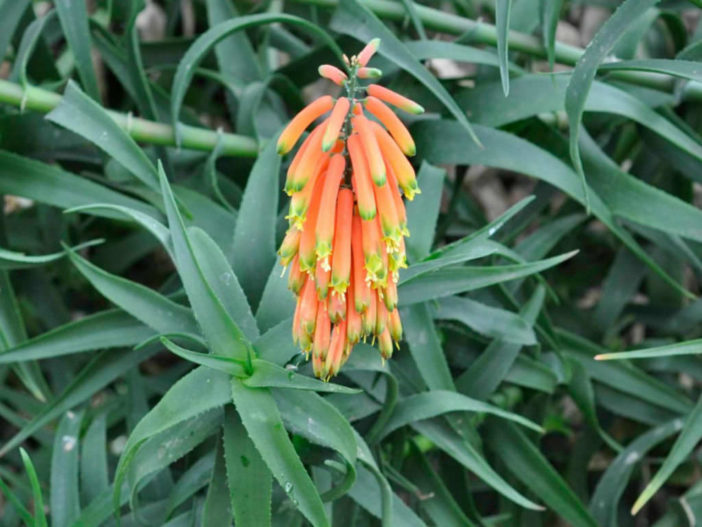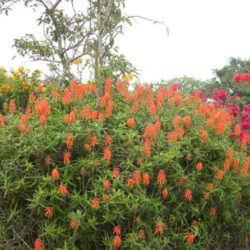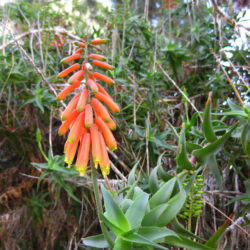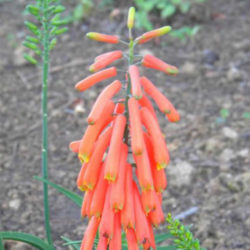Scientific Name
Aloiampelos ciliaris (Haw.) Klopper Gideon F. Sm.
Common Name(s)
Climbing Aloe, Common Climbing Aloe, Fringe-leaved Aloe
Synonym(s)
Aloe ciliaris, Aloe ciliaris var. ciliaris, Aloe ciliaris var. flanaganii, Aloiampelos ciliaris var. ciliaris
Scientific Classification
Family: Asphodelaceae
Subfamily: Asphodeloideae
Genus: Aloiampelos
Description
Aloiampelos ciliaris, formerly known as Aloe ciliaris, is a fast-growing succulent with a swollen stem base from which arise long, thin, untidy stems with green, spirally arranged leaves. The climbing stems grow up to 33 feet (10 m) long, branching and rooting at points where they touch the soil. Leaves are fleshy, lance-shaped, strongly recurved, up to 6 inches (15 cm) long and 1 inch (2.5 cm) wide. They tend to be more crowded at the ends of the branches, forming a loose rosette. The plant forms a straggly shrub if there are no nearby trees to act as a host and support.
The unbranched inflorescence is up to 12 inches (30 cm) long and rises vertically from near the tips of the branches. Flowers are tubular, scarlet with yellowish-green tips, and can appear throughout the year, mainly in spring. The raceme is cylindrical up to 6 inches (15 cm) long.
Origin
Aloiampelos ciliaris is native to South Africa. It is widespread in the coastal and thicket vegetation of the Eastern Cape, occurring from Kariega (formerly Uitenhage) in the south to the Kei River mouth in the northeast.
Etymology
The specific epithet "ciliaris (sil-ee-AIR-iss)" means "relating to or involving cilia" and refers to the soft, white teeth along the margins of the leaves extending around the back of their clasping base. This feature distinguishes this species from other species in the genus.

Hardiness
USDA hardiness zones 9a to 11b: from 20 °F (−6.7 °C) to 50 °F (+10 °C).
How to Grow and Care
Due to their hardiness and the wide range of flower colors, these slender succulents have become popular ornamental plants in South African gardens. The commoner species (such as, the more widespread Aloes of the Eastern Cape) are also increasingly grown in gardens overseas.
Climbing Aloes require a sunny, well-drained position and are particularly suitable for rockeries. The taller, climbing species are commonly planted along fences and boundaries, growing through the surrounding foliage. However, the lower, rambling species are better suited for rockeries, slopes, or terraces, which they will naturally cascade down over.
Learn more at How to Grow and Care for Climbing Aloes.
Hybrids
Links
- Back to genus Aloiampelos
- Succupedia: Browse succulents by Scientific Name, Common Name, Genus, Family, USDA Hardiness Zone, Origin, or cacti by Genus
Photo Gallery
Click on a photo to see a larger version.


